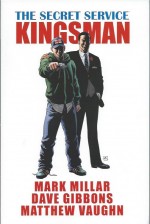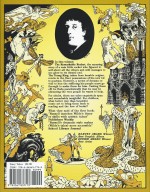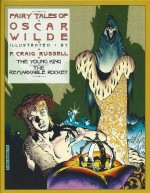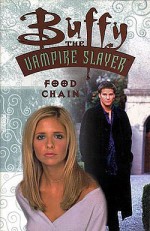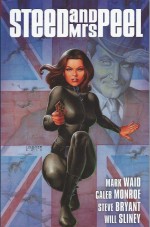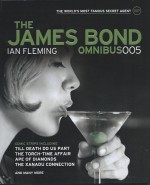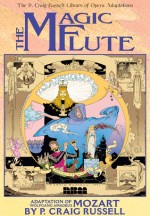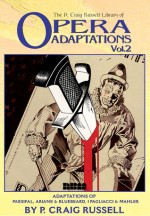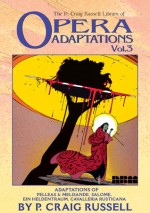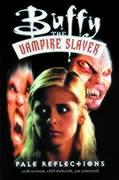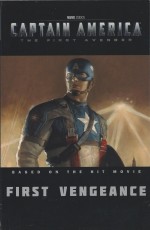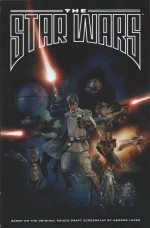
By George Lucas, J.W. Rinzler, Mike Mayhew & Rain Beredo (Titan Books)
ISBN: 978-1-78329-498-5
I’m sure we all know the modern mythology of Star Wars and its mindbendingly expansive continuity to a greater or lesser extent. The problem with any such monolithic achievement is an eventual loss of spontaneity and freshness, but now true disciples and occasional dabblers alike have another, new-old strand to follow…
In September 2013 Dark Horse Comics began a 9-issue adaptation (#0-8) of George Lucas’ 1974 original draft for a science fiction movie romp of epic scope, expanded and interpreted by scripter Jonathan W. Rinzler, illustrator Mike Mayhew and colour-artist Rain Beredo, which offered fans of both the franchise and action comics another bite from a very different cherry.
Sadly, what most die-hards will want is to seek out the similarities and differences but, as tempting as that is, I’d like to concentrate on what makes this a good graphic novel and leave the cinematic nitpicking to those more adept and so inclined…
If you had somehow come from another planet and picked up The Star Wars, what you would have is a grandiose space-opera thriller with quite a few similarities to Frank Hebert’s epochal Dune saga and redolent of Alex Raymond’s Flash Gordon, jam-packed with valiant champions fighting a last-ditch rearguard action against an oppressive, tyrannical Empire which wants to run everything…
The warriors called Jedi-Bendu whose martial skills carved out a benevolent galactic coalition are in decline, hunted near to extinction by a rival cult known as the Knights of Sith. As the martial sects waged their war, the nature of politics changed and a new, rapacious government sought to consolidate a league of voluntarily participant systems into an overweening monument to iron-handed control.
On the fourth moon of Utapau aged, ravaged Kane Starkiller is training his sons in the all-but lost martial arts of Jedi-Bendu when the hunters who have eradicated almost all of his kind appear. When the family heroes finally escape the trap they are reduced to only Kane and his elder son Annikin…
Heartbroken, they head for Aquilae, unaware that their homeworld has been targeted by the New Empire. The autonomous system is the last free star kingdom, all others having capitulated to pressure and been absorbed into the burgeoning governmental/commercial juggernaut.
The Emperor, Governor Hoedaack and taciturn General Vader don’t expect too much trouble with this last campaign, but tribunal member Vantoss Coll believes otherwise. He knows Aquilae’s planetary defences are commanded by the mythic Jedi-Bendu Luke Skywalker…
It won’t be enough. Skywalker has the ears of King Kayos and Queen Breha but their parliament is riddled with cowards, appeasers and outright traitors like Count Sandage…
When the attack comes it is in the form of a colossal, moon-sized space-station and Skywalker’s forces are overwhelmed, even with the help of the recently returned Kane and Annikin and a desperate warning from Aquilae’s top agent Clieg Whitsun who arrives moments before the first shattering assault.
With hell about to rain down Skywalker orders Annikin to collect and protect wayward heir Princess Leia whilst he leads the planet’s space forces against the encroaching death star. During the battle two argumentative imperial droids, Artwo and Threepio, eject from the station and meet up with Annikin and Leia in the deep deserts below.
With Kayos murdered, Sandage happily capitulates and orders Skywalker to surrender, but the old soldier refuses…
With Captain Whitsun in tow he absonds, choosing to save the young Princes Biggs and Windy by getting them off-planet. Intending to link up with Annikin at distant Gordon Spaceport where his old alien smuggler pal Han Solo lurks, their flight is harried by faceless waves of white armoured troopers but the real trouble starts when despicable Vader reluctantly accepts the advice and aid of formidable Sith legend Prince Valorum…
After a stunning and non-stop procession of increasingly brutal fights – and with their numbers tragically reduced by the death of two valiant stars – the surviving fugitives get off-planet and make it to primitive frontier world Yavin where Skywalker and Annikin find not only danger and betrayal but an unlikely turncoat ally and a potential game-changing army of bellicose giant beasts called Wookies…
Of course it’s all far more complex and intriguing than that, with young love, dastardly betrayals, tragic sacrifice, plentiful comedy moments and above all astounding, rocket-paced action to carry readers along, and lovers of blaster-blazing action will be well served by the raw energy and lovely artwork.
It would appear that there is an inexhaustible demand for stories from “A Galaxy Far, Far Away…†but this time as another tale of noble rebels and dastardly Empires unfolds the big difference is that you don’t really know what’s coming next. If you’re a movie maven you could call it an alternate universe yarn if you wanted to, but this is a book no lover of great comics will want to miss.
The Star Wars and Star Wars © 2014 Lucasfilm Ltd. & ™. All rights reserved. Used under authorisation. Text and illustrations for Star Wars are ©, 2013, 2014 Lucasfilm

